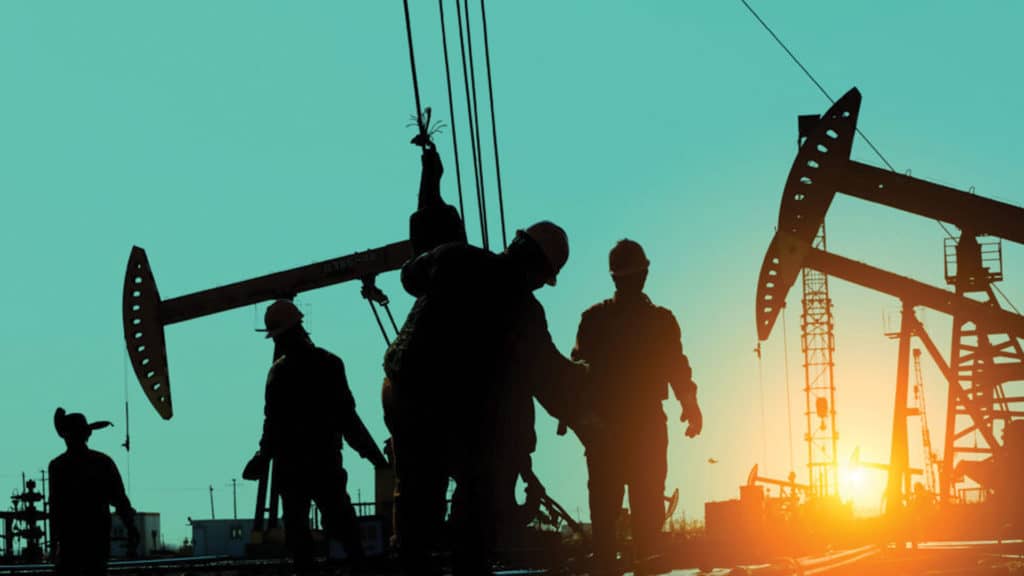Why Pumpers Power the Digital Oilfield

In today’s digital oilfield, information is king. Sound exploration and production decisions demand high-quality field data. As such, operational efficiency, cash flow, and competitive edge all hinge on an operator’s field data capture capabilities.
Supervisory control and data acquisition (SCADA) and other remote monitoring technologies connect well sites with field and corporate offices. Such systems transmit valuable telemetry, such as production volumes, pressures, and equipment status, but can be cost-prohibitive to deploy. And even with the most sophisticated automated data acquisition capabilities, E&P companies require more extensive visibility into their production operations than remote monitoring technology alone can provide. A current and complete view of operations requires a field data capture approach that combines people, process, and technology.
Advantages of Boots on the Ground
The demands of managing a producing well are manifold. From the wellhead and facilities to sales and compliance, operators juggle dozens of data points for a single well every day. Lease operators are literally where the road meets the rubber when it comes to a company’s view of its assets. Field staff make their daily rounds to inspect, to measure, and to maintain.
Remote monitoring and manual data capture are not mutually exclusive. A group of legacy stripper wells might be outfitted with SCADA sensors to minimize data acquisition costs, for example, but lease operators will always make their rounds. Tank events, sales runs, and water hauls require boots on the ground among a host of other hands-on duties.
Despite the emphasis placed on information and automation technologies, field staff remain the backbone of production operations.
Field Data Capture Opportunity
Lease operators are on the front line when it comes to field data capture. Historically equipped with a grease pencil or spreadsheet, lease operators record a wide range of well site data, including meter readings, tank levels, well tests and events. Traditional data capture, however, is plagued by data entry errors and inconsistencies. What’s more, manually recorded data can take days or even longer to be collated into a structured form, such as loading into a master well database, for review and analysis.
The solution to improving data acquisition lies in the smartphones field staff carry in their pockets. In an increasingly “mobile-first” world, mobile apps are replacing traditional personal computer software programs. And nowhere is the need for mobile apps more apparent than the remote and rugged environment of a well route.
The benefits of a field data capture app built for lease operators include:
- Comprehensive data acquisition – Enables operators to efficiently collect all required production and operations data, including oil & gas volumes, well status, pressures, well tests, sales runs, water hauls, and BS&W draws.
- Real-time reporting – Mobile apps maintain asynchronous connections with the cloud, ensuring that data is synced instantly with a production database. When cellular service is temporarily unavailable in remote locations, data is cached in disconnected mode and synced automatically when cellular service is available.
- Data quality – Reference data, such as field, lease, or well name, can be defined by administrators, allowing field staff to choose from standardized lists. Combined with data entry validation, inaccurate and inconsistent data is significantly reduced.
- Ease of use – Mobile apps require minimal training compared to desktop applications. Intuitive user interfaces leverage touch screen technology, enabling lease operators to record field data with just one hand. Staff bring their own device (BYOD) allowing them to choose the mobile device they prefer to use in the field.
- Integrated functions – Apps take advantage of native mobile functionality, including the ability to take a photo and associate it with a property or well and tag assets with location data.
- Low-cost field data capture – Mobile apps are a highly effective method of capturing field data which takes advantage of a lease operator’s existing smartphone. As a result, E&P companies can dramatically improve operational awareness at a fraction of the cost of SCADA and other automated monitoring systems.
Armed with their smartphone and an app built specifically for field data capture, lease operators are powering a new generation of digital oilfield.
W Energy Software’s Field Data Capture Solution
A pioneer of field data capture for independents, W Energy Software offers next-generation mobile technology designed specifically for lease operators. App features include one-touch data entry for liquids and gas, battery, events, and well tests as well as data caching and charting. And with more than 100 production attributes to track, the mobile solution can be customized to fit the exact field data capture needs of each client.
What’s more, W Energy Software’s lease operator app is fully integrated with the company’s leading cloud-based production and operations reporting platform. As a result, data recorded by field staff seamlessly drives real-time production dashboards, back-office reporting, and analysis.
___________________________________________________________________________________________________________
 |
Steve Haglund, VP of Field Operations Solutions, W Energy Software Steve has over twenty years of experience in strategy, business development, operations, and integration in the information technology and oil & gas industries. Previously, Steve was CEO of NeoFirma, acquired by W Energy Software in 2019. Prior to that, Steve was co-founder of Insolexen, a Michigan Fast50 recipient as well with Anderson Consulting (Accenture). webMethods, Baker-Hughes, and FMC. He enjoys listening to live music, working on his golf swing, and traveling with his wife, son, and daughter. |